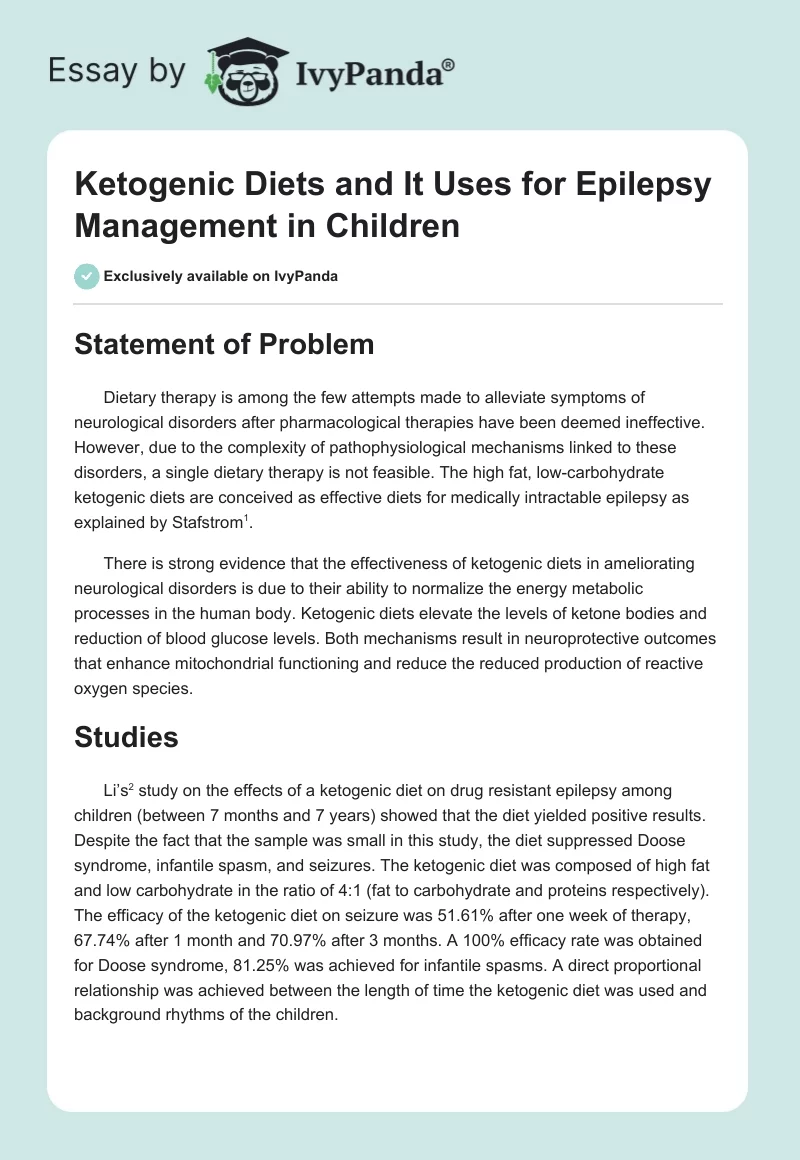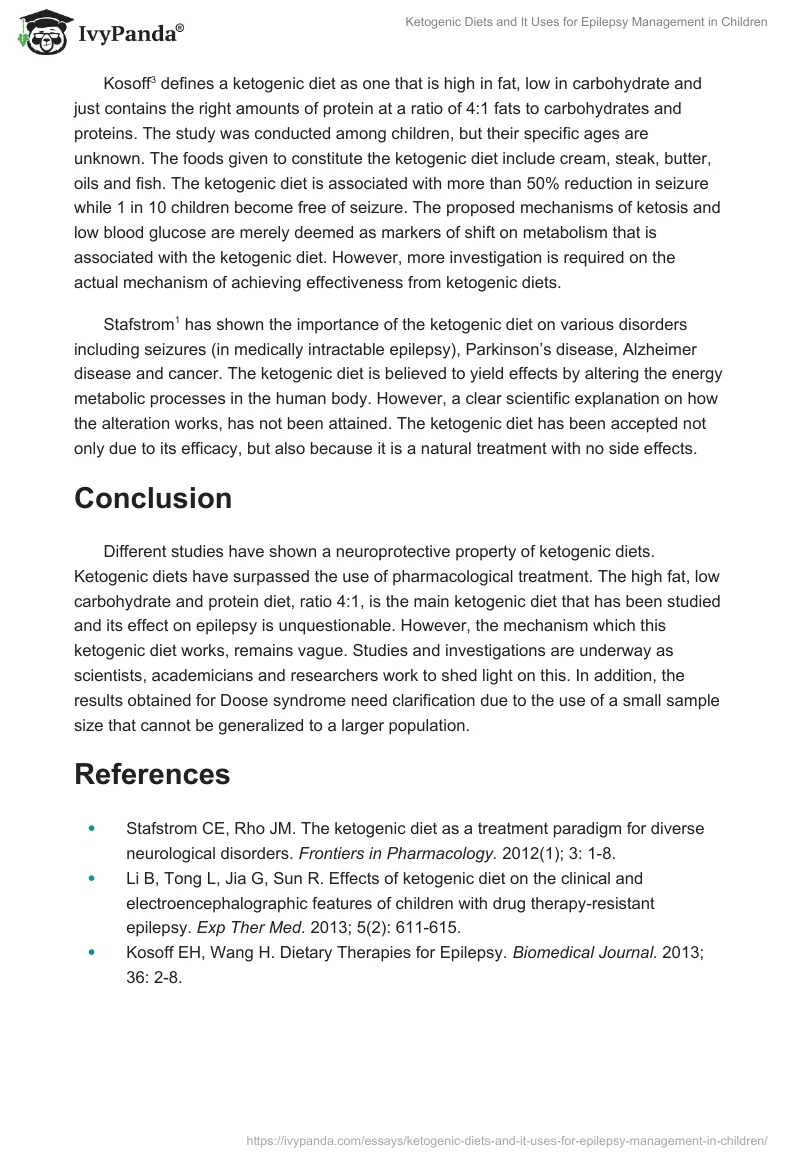Statement of Problem
Dietary therapy is among the few attempts made to alleviate symptoms of neurological disorders after pharmacological therapies have been deemed ineffective. However, due to the complexity of pathophysiological mechanisms linked to these disorders, a single dietary therapy is not feasible. The high fat, low-carbohydrate ketogenic diets are conceived as effective diets for medically intractable epilepsy as explained by Stafstrom.
There is strong evidence that the effectiveness of ketogenic diets in ameliorating neurological disorders is due to their ability to normalize the energy metabolic processes in the human body. Ketogenic diets elevate the levels of ketone bodies and reduction of blood glucose levels. Both mechanisms result in neuroprotective outcomes that enhance mitochondrial functioning and reduce the reduced production of reactive oxygen species.
Studies
Li’s study on the effects of a ketogenic diet on drug resistant epilepsy among children (between 7 months and 7 years) showed that the diet yielded positive results. Despite the fact that the sample was small in this study, the diet suppressed Doose syndrome, infantile spasm, and seizures. The ketogenic diet was composed of high fat and low carbohydrate in the ratio of 4:1 (fat to carbohydrate and proteins respectively). The efficacy of the ketogenic diet on seizure was 51.61% after one week of therapy, 67.74% after 1 month and 70.97% after 3 months. A 100% efficacy rate was obtained for Doose syndrome, 81.25% was achieved for infantile spasms. A direct proportional relationship was achieved between the length of time the ketogenic diet was used and background rhythms of the children.
Kosoff defines a ketogenic diet as one that is high in fat, low in carbohydrate and just contains the right amounts of protein at a ratio of 4:1 fats to carbohydrates and proteins. The study was conducted among children, but their specific ages are unknown. The foods given to constitute the ketogenic diet include cream, steak, butter, oils and fish. The ketogenic diet is associated with more than 50% reduction in seizure while 1 in 10 children become free of seizure. The proposed mechanisms of ketosis and low blood glucose are merely deemed as markers of shift on metabolism that is associated with the ketogenic diet. However, more investigation is required on the actual mechanism of achieving effectiveness from ketogenic diets.
Stafstrom has shown the importance of the ketogenic diet on various disorders including seizures (in medically intractable epilepsy), Parkinson’s disease, Alzheimer disease and cancer. The ketogenic diet is believed to yield effects by altering the energy metabolic processes in the human body. However, a clear scientific explanation on how the alteration works, has not been attained. The ketogenic diet has been accepted not only due to its efficacy, but also because it is a natural treatment with no side effects.
Conclusion
Different studies have shown a neuroprotective property of ketogenic diets. Ketogenic diets have surpassed the use of pharmacological treatment. The high fat, low carbohydrate and protein diet, ratio 4:1, is the main ketogenic diet that has been studied and its effect on epilepsy is unquestionable. However, the mechanism which this ketogenic diet works, remains vague. Studies and investigations are underway as scientists, academicians and researchers work to shed light on this. In addition, the results obtained for Doose syndrome need clarification due to the use of a small sample size that cannot be generalized to a larger population.
References
- Stafstrom CE, Rho JM. The ketogenic diet as a treatment paradigm for diverse neurological disorders. Frontiers in Pharmacology. 2012(1); 3: 1-8.
- Li B, Tong L, Jia G, Sun R. Effects of ketogenic diet on the clinical and electroencephalographic features of children with drug therapy-resistant epilepsy. Exp Ther Med. 2013; 5(2): 611-615.
- Kosoff EH, Wang H. Dietary Therapies for Epilepsy. Biomedical Journal. 2013; 36: 2-8.


